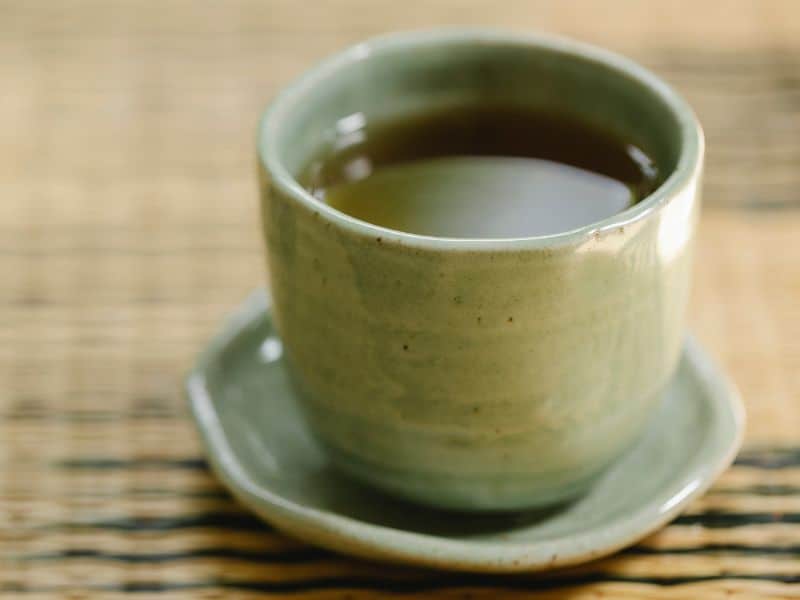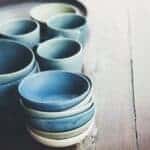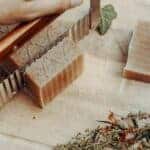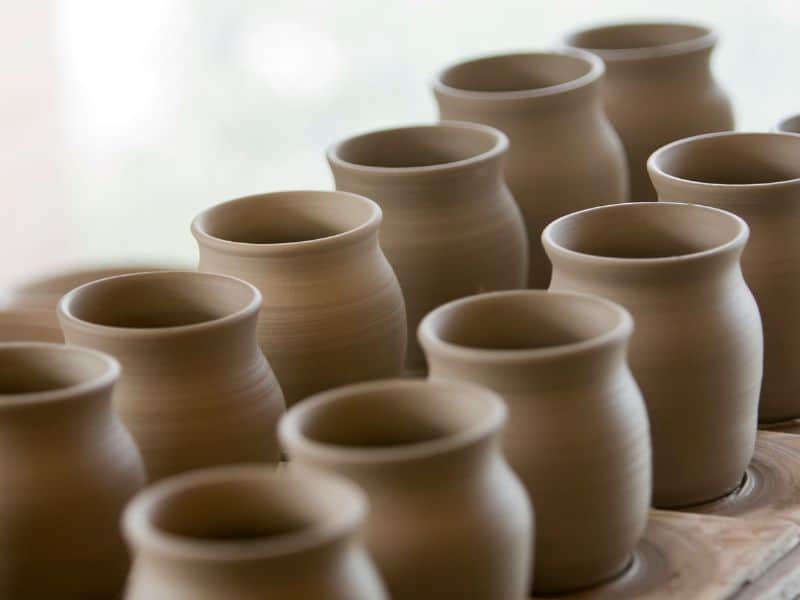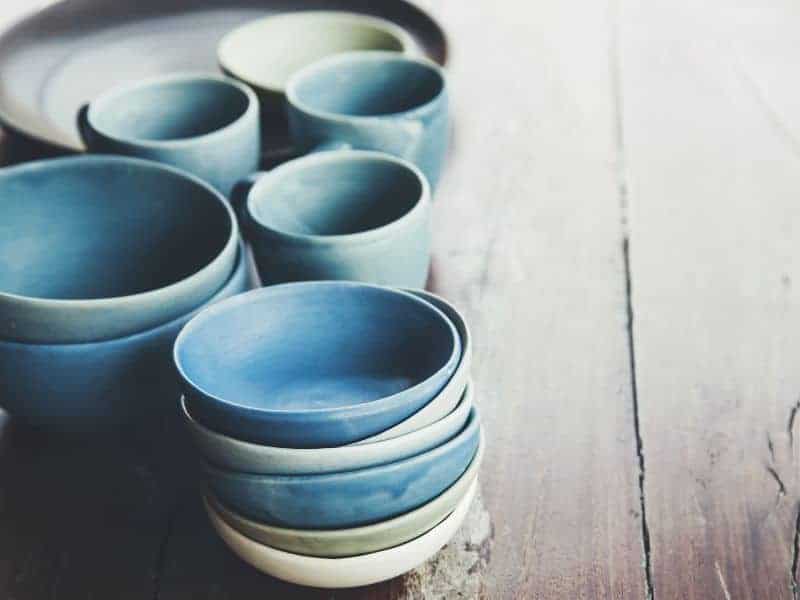Handmade pottery holds a special place in our homes and hearts. It’s not just about the aesthetic appeal, but also the functionality. However, a common question that arises is about the safety of using it in the microwave. Understanding the interaction between pottery and microwaves is crucial to ensure the longevity of these beautiful pieces and, more importantly, our safety.
Handmade pottery is microwave safe as long as it doesn’t have any metal trim. Check the pottery for ornate designs or gold rims to be sure it can be microwaved safely, as these are typically made of metal. When in doubt, use alternative heating methods.
Additionally, consider the type of clay and glaze used in the pottery. Stoneware clay, for instance, is generally more microwave-safe than others. Glazes without metallic elements are also safer. Let’s take a closer look below.
The Science Behind Microwaving Pottery
A microwave oven works by producing electromagnetic waves. These waves penetrate the food and excite the water molecules within, generating heat. This is how food gets heated in a microwave. However, not all materials respond the same way to microwaves. Some materials absorb the microwaves and heat up, while others reflect them.
Certain materials can experience thermal shock when subjected to the rapid heating of a microwave. Thermal shock occurs when a material is rapidly heated or cooled, causing different parts of the object to expand or contract at different rates.
This can lead to cracking or even shattering. Pottery, being a product of heat, is susceptible to thermal shock, especially if it has not been properly glazed or if it has been constructed with uneven thickness.
Handmade Pottery and Microwave Issues
The microwave safety of handmade pottery is not a straightforward yes or no. It depends on several factors, including the type of clay used, the glaze applied, and how the pottery was constructed. For instance, pottery made from stoneware clay is generally more resistant to heat compared to other types of clay. This is due to the high firing temperatures used in making stoneware, which makes it more capable of withstanding the heat generated by a microwave.
However, even with heat-resistant clay, the glaze used can affect microwave safety. Some glazes contain metals, which can spark in the microwave and cause a fire.
Additionally, the construction of the pottery piece can also influence its microwave safety. For example, pottery with thin walls may be more prone to cracking from thermal shock compared to thicker pieces.
Despite these factors, it’s important to note that there are risks associated with microwaving handmade pottery. These risks can be minimized by determining if your pottery is microwave safe before using it in this manner.
Always check for any labels or markings that indicate microwave safety. When in doubt, it’s best to err on the side of caution and avoid microwaving your handmade pottery.
Handmade Pottery and Daily Use
Handmade pottery items, such as ceramic plates and mugs, are often used daily due to their versatility. They can be used for serving food, drinking, or even as decorative pieces. Their durability under room temperature conditions makes them suitable for everyday use. However, it’s important to remember that not all pottery is created equal. Some pieces may be more durable than others, depending on the type of clay used and how they were fired.
The beauty of handmade pottery lies in its uniqueness. Each piece is a work of art, crafted with care and attention to detail. This makes them a joy to use and display in your home. However, this uniqueness also means that each piece will have its own set of characteristics, including its response to heat. Therefore, it’s always a good idea to check with the potter or manufacturer about the best way to care for your handmade pottery.
Is It a Good Idea to Microwave Old Ceramic?
When it comes to old ceramics, the question of microwave safety becomes even more critical. Over time, ceramics can develop tiny cracks that may not be visible to the naked eye. These cracks can expand when subjected to the high temperatures of a microwave, potentially causing the piece to break.
Therefore, it’s generally not a good idea to microwave old ceramics. Instead, consider using other methods to heat your food, such as using a conventional oven or stovetop. These methods provide a more gentle and even heat, which can be safer for your old ceramics.
It’s also worth noting that old ceramics may have been made with materials or techniques that are no longer considered safe today. For example, some old glazes contain lead, which can leach into food when heated. So, if you’re dealing with vintage or antique ceramics, it’s best to use them for decorative purposes only.
Microwaving Different Types of Handmade Pottery
In a recent study, different types of handmade pottery were tested in a microwave. The aim was to understand the microwave safety of various pottery types. The pottery pieces were subjected to the same heating duration and power level in the microwave.
The results were intriguing. Some pottery types withstood the microwave heating without any visible damage. Others showed signs of thermal shock, such as cracking or crazing. This study highlighted the importance of understanding the specific characteristics of your pottery before microwaving it.
The results of this study serve as a reminder that not all pottery is created equal. Even within the same type of clay, there can be variations in microwave safety. This is due to factors such as the specific formulation of the clay, the firing process, and the type of glaze used.
Alternatives to Microwaving Handmade Pottery
If you’re unsure about the microwave safety of your handmade pottery, there are alternatives. One option is to use a conventional oven. While this method may take longer, it provides a more even and gentle heat.
Another alternative is to heat your food separately and then serve it in your pottery. This way, you can still enjoy the beauty of your handmade pottery without risking damage from the microwave.
You could also consider using a double boiler for heating certain foods. This method involves placing the food in a bowl, which is then placed in a pot of simmering water. The steam from the water gently heats the food in the bowl. This method is particularly useful for delicate foods that can easily overheat in a microwave.
Tips for Taking Care of Your Handmade Pottery
Taking good care of your handmade pottery can make it last longer and keep it looking nice. Here are some tips to help you do that:
- Cleaning: Be gentle when you clean your pottery. Don’t use harsh cleaners or rough scrubbing brushes. Use a soft cloth or sponge and mild soap instead. Make sure to rinse it well so no soap is left behind.
- Storing: Keep your pottery in a safe place where it won’t get knocked over or bumped. If you’re stacking things like plates or bowls, put a soft cloth between each one to stop them from scratching each other.
- Handling: Be careful when you handle your pottery. Handmade pottery can be more fragile than the kind you buy in a store. Always hold it securely and try not to carry too many pieces at once.
- Inspecting: Look over your pottery regularly for any damage like chips or cracks. This is really important for older pieces. If you see any damage, don’t use the piece until it can be fixed properly.
- Avoiding Quick Temperature Changes: Pottery can crack if it goes from cold to hot too quickly. Try not to put a dish straight from the fridge into a hot oven.
- Microwave and Dishwasher Use: Always check with the person who made the pottery or the company that sold it before you put it in the microwave or dishwasher. If you’re not sure, it’s better to be safe and not do it.
- Repairs: If your pottery gets chipped or cracked, get a professional to fix it. Some damage can be fixed, but it needs to be done the right way to keep the pottery strong.
When following these tips, you can help your handmade pottery stay beautiful and useful for a long time.
Frequently Asked Questions
Thermal shock occurs when a material is rapidly heated or cooled, causing different parts to expand or contract at different rates. This can lead to cracking or shattering in pottery.
Generally, it’s not recommended to microwave old ceramics. Over time, ceramics can develop tiny cracks that may expand when subjected to high temperatures, potentially causing the piece to break.
Alternatives include using a conventional oven, stovetop, or a double boiler. You can also heat your food separately and then serve it in your pottery.
Some pottery is not microwave safe due to the type of clay or glaze used, or because of its construction. For example, pottery with thin walls may be more prone to cracking from thermal shock.
The safest way is to check if the pottery is microwave safe. If not, consider using a conventional oven, stovetop, or a double boiler. Alternatively, heat your food separately and then serve it in your pottery.
Conclusion
In conclusion, the safety of microwaving handmade pottery depends on various factors. These include the type of clay, the glaze, and the construction of the pottery piece. While some pottery can be safely microwaved, it’s always best to check with the potter or manufacturer first. When in doubt, consider using alternative methods to heat your food.
The beauty of handmade pottery is that it brings a touch of individuality and artistry to our everyday lives. By understanding how to properly care for these pieces, we can ensure that they continue to bring us joy for many years to come.

